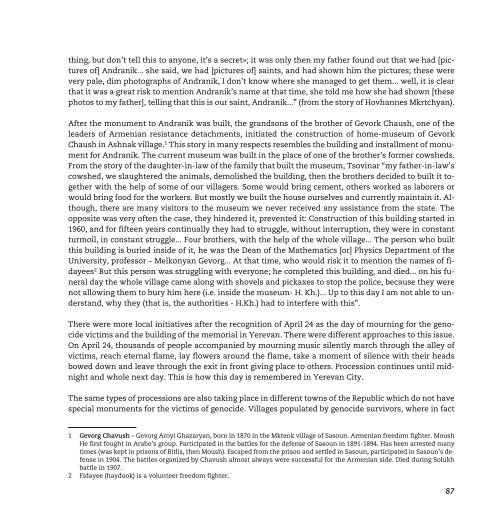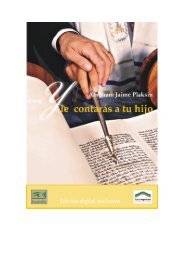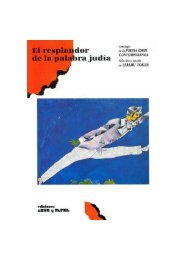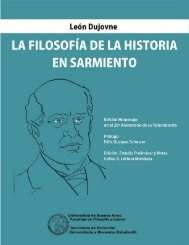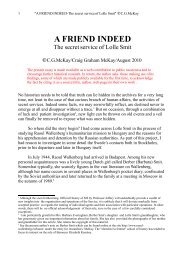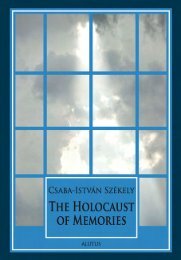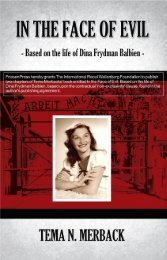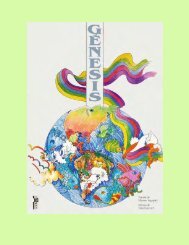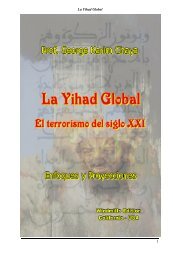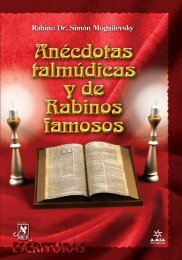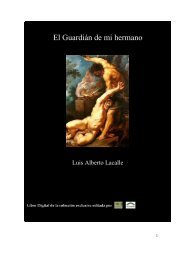In the village of Ujan, where the villagers initiatedthe construction of monument of Andranik 1 in 1967,problems with the various levels of authorities werefrequent. Villagers had collected the money for themonument construction. It was installed on April 11,1967. According <strong>to</strong> Saribek Tovmasyan, who was 13at the time: “In one night, secretly, villagers built thefence around the place where they intended <strong>to</strong> erectthe monument. I remember clearly when, how andwhat they brought, the car that brought it. Around1:30-2:00 am the monument was brought and installed.We, all the children and adults, were helping.I was there, <strong>to</strong>o. It was put up secretly during thenight. Guards were placed around so that nobodycould interfere. Even 3-4 years old kids in our villageknew that it was prohibited. We were aware thatthis is anti-soviet action. <strong>The</strong>n, authorities tried <strong>to</strong>demolish it, but our villagers didn’t let them. Policecame <strong>to</strong> demolish it several times, but our villagerswould fight them with shovels and pitchforks. Almostten years they guarded the monument at nighttime. <strong>The</strong>n authorities probably got used <strong>to</strong> it.” Evenin this period people were still afraid <strong>to</strong> speak abouttheir heroes. <strong>The</strong> mother of our interlocu<strong>to</strong>r fromthe Chqnagh village of Aparan was the only survivorin their family line. Russian soldiers found heramong dead corpses when she was ten and deliveredher <strong>to</strong> an orphan asylum. Only at the age of 60Andranik Monument in the village of Ujan.she dared <strong>to</strong> show her husband the pho<strong>to</strong>graphs ofAndranik, which she had been carefully hiding: “Mymother said that in 1965, when the Movement wasinitiated in Armenia, at that time she called my father, telling him: «Come, I am going <strong>to</strong> tell you some-1 Andranik – Ozanyan Toros Andranik, born in 1865 in Shapin Garahisar, died in 1927 in USA, near Sacramen<strong>to</strong>. Armeniangeneral and freedom fighter, he was member of the Armenian Revolutionary Federation Dashnakcutyun party, left it in1907, was res<strong>to</strong>red in 1914, and then left again in 1917, making a public announcement. Andranik participated in the defensebattles, displaying personal valor. He fought in the Balkan war (1912-1913). MoushIn 1916-1917 he exerted major efforts <strong>to</strong>help out the Armenian refugees. In 1918 received the title of Major-General. He fought at the Caucasian front. After 1922 helived in the USA. He has been awarded with highest military awards of Russia, Bulgaria, Greece and France. Andranik’s relicswere buried at the Père Lachaise cemetery in Paris. Numerous monuments have been placed in his memory, many streetsnamed after him. <strong>The</strong> grandparents of some of our respondents knew Andranik personally and <strong>to</strong>ok part in defense battleswith him.86
thing, but don’t tell this <strong>to</strong> anyone, it’s a secret»; it was only then my father found out that we had [picturesof] Andranik... she said, we had [pictures of] saints, and had shown him the pictures; these werevery pale, dim pho<strong>to</strong>graphs of Andranik, I don’t know where she managed <strong>to</strong> get them... well, it is clearthat it was a great risk <strong>to</strong> mention Andranik’s name at that time, she <strong>to</strong>ld me how she had shown [thesepho<strong>to</strong>s <strong>to</strong> my father], telling that this is our saint, Andranik...” (from the s<strong>to</strong>ry of Hovhannes Mkrtchyan).After the monument <strong>to</strong> Andranik was built, the grandsons of the brother of Gevork Chaush, one of theleaders of Armenian resistance detachments, initiated the construction of home-museum of GevorkChaush in Ashnak village. 1 This s<strong>to</strong>ry in many respects resembles the building and installment of monumentfor Andranik. <strong>The</strong> current museum was built in the place of one of the brother’s former cowsheds.From the s<strong>to</strong>ry of the daughter-in-law of the family that built the museum, Tsovinar “my father-in-law’scowshed, we slaughtered the animals, demolished the building, then the brothers decided <strong>to</strong> built it <strong>to</strong>getherwith the help of some of our villagers. Some would bring cement, others worked as laborers orwould bring food for the workers. But mostly we built the house ourselves and currently maintain it. Although,there are many visi<strong>to</strong>rs <strong>to</strong> the museum we never received any assistance from the state. <strong>The</strong>opposite was very often the case, they hindered it, prevented it: Construction of this building started in1960, and for fifteen years continually they had <strong>to</strong> struggle, without interruption, they were in constantturmoil, in constant struggle... Four brothers, with the help of the whole village... <strong>The</strong> person who builtthis building is buried inside of it, he was the Dean of the Mathematics [or] Physics Department of theUniversity, professor – Melkonyan Gevorg... At that time, who would risk it <strong>to</strong> mention the names of fidayees2 But this person was struggling with everyone; he completed this building, and died... on his funeralday the whole village came along with shovels and pickaxes <strong>to</strong> s<strong>to</strong>p the police, because they werenot allowing them <strong>to</strong> bury him here (i.e. inside the museum- H. Kh.)... Up <strong>to</strong> this day I am not able <strong>to</strong> understand,why they (that is, the authorities - H.Kh.) had <strong>to</strong> interfere with this”.<strong>The</strong>re were more local initiatives after the recognition of April 24 as the day of mourning for the genocidevictims and the building of the memorial in Yerevan. <strong>The</strong>re were different approaches <strong>to</strong> this issue.On April 24, thousands of people accompanied by mourning music silently march through the alley ofvictims, reach eternal flame, lay flowers around the flame, take a moment of silence with their headsbowed down and leave through the exit in front giving place <strong>to</strong> others. Procession continues until midnightand whole next day. This is how this day is remembered in Yerevan City.<strong>The</strong> same types of processions are also taking place in different <strong>to</strong>wns of the Republic which do not havespecial monuments for the victims of genocide. Villages populated by genocide survivors, where in fact1 Gevorg Chavush – Gevorg Aroyi Ghazaryan, born in 1870 in the Mktenk village of Sasoun. Armenian freedom fighter. MoushHe first fought in Arabo’s group. Participated in the battles for the defense of Sasoun in 1891-1894. Has been arrested manytimes (was kept in prisons of Bitlis, then Moush). Escaped from the prison and settled in Sasoun, participated in Sasoun’s defensein 1904. <strong>The</strong> battles organized by Chavush almost always were successful for the Armenian side. Died during Solukhbattle in 1907.2 Fidayee (haydook) is a volunteer freedom fighter.87
- Page 2 and 3:
Published by:Institut für Internat
- Page 5 and 6:
ContentsForeword...................
- Page 7 and 8:
ForewordThe project “Adult Educat
- Page 10 and 11:
Aras, Yasin Aras, Welat Ay, Cenk Ce
- Page 12 and 13:
The main audience of this book is o
- Page 15 and 16:
“Wish they hadn’t left”:The B
- Page 17 and 18:
ed by 1915 and where memories of Ar
- Page 19 and 20:
1915 tends to be represented by int
- Page 21 and 22:
Yet to a large extent, Turkish inte
- Page 23 and 24:
this, we can’t. It’s impossible
- Page 25 and 26:
een very advanced in trade and craf
- Page 27 and 28:
How to Come to Terms with Phantom P
- Page 29 and 30:
It is always you who has to be nice
- Page 32 and 33:
to the way he was raised: “They f
- Page 34 and 35:
empathize with Armenians: “My aun
- Page 36 and 37: Adil is not the only one marked by
- Page 38 and 39: ness may be an attempt to overcome
- Page 40 and 41: dernity and the oral transmission o
- Page 42 and 43: A soup pot with spoons around itAt
- Page 44 and 45: What if My Mother is Armenian?Ruhi
- Page 46 and 47: If I were younger I’d get baptize
- Page 48: with butter. We’ll serve the impo
- Page 51 and 52: The time Salih and Gavrik are worki
- Page 53 and 54: Turkey’s changing context is refr
- Page 55 and 56: ‘It was to be expected.’ And my
- Page 57 and 58: against one another. The feet of th
- Page 59 and 60: Fear of Losing a CityZübeyde was b
- Page 61 and 62: half for me.’ But what do our Mus
- Page 63 and 64: e discussed when the kids were arou
- Page 65 and 66: possible by the difference in relig
- Page 67 and 68: The Charm of AraratMehmet is a 62-y
- Page 69 and 70: dogs protected the sheep against wo
- Page 71 and 72: The Story of the “Night People”
- Page 73 and 74: “I don’t know why, but my grand
- Page 75: Research in Armenia:“Whom to Forg
- Page 78 and 79: and can generally be located in Tur
- Page 80 and 81: “Whom to Forgive? What to Forgive
- Page 82 and 83: “Private Stories”After the esta
- Page 84 and 85: Recalling MemoriesOral history diff
- Page 88 and 89: The home-museum of Gevork Chaush in
- Page 90 and 91: Memorial in the Ashnak village dedi
- Page 92 and 93: other regions are entirely populate
- Page 94 and 95: sources and materials for their mem
- Page 96 and 97: Ergir’s Soil is Strong, Ergir’s
- Page 98: Tatevik, the granddaughterof Mihran
- Page 101 and 102: eral meanings in Armenian -”whole
- Page 103 and 104: The Gospel with Golden Binding of S
- Page 105 and 106: keeps a copper chalice that was bro
- Page 107 and 108: In some families the passports of t
- Page 109 and 110: at that time, Mustafa and Jamal, wh
- Page 111 and 112: People were so frightened to lose g
- Page 113 and 114: naked, they were decapitating every
- Page 115 and 116: Water, Fire, Desert“There was an
- Page 117 and 118: his mother dragged him behind her,
- Page 119 and 120: Many of our narrators mention the R
- Page 121 and 122: In the word-stock of the survivors
- Page 123 and 124: in Kurdish villages, and helping th
- Page 125 and 126: “Well, They Are Human Too”Even
- Page 127 and 128: member this well, they said, the el
- Page 129 and 130: speak to each other. Questioned by
- Page 131 and 132: Hamze Ptshuk, survived from Hosnut
- Page 133 and 134: “I don’t Know...”Why did this
- Page 135 and 136: “My Dear Almast, Write it Down, W
- Page 137 and 138:
took his rifle and ran. The dog fel
- Page 139 and 140:
she didn’t tell it to me. In the
- Page 141 and 142:
elder guy in this house died and hi
- Page 143 and 144:
AH - Turks always killed to get int
- Page 145 and 146:
“My Father used to Tell us at Hom
- Page 147 and 148:
person... I have never seen him, bu
- Page 149 and 150:
gotten what you knew”. So, out of
- Page 151 and 152:
a paid Adult Residential Facility,
- Page 153 and 154:
It was probably after 60s... My fat
- Page 155 and 156:
the Vardevar 1 day . Even if we mak
- Page 157 and 158:
that this wasn’t a dream... and..
- Page 159 and 160:
was our historical village. Nich, I
- Page 161 and 162:
just filming around myself with no
- Page 163 and 164:
that person whether I could take a
- Page 165:
[Turk. wife]”. In the morning I t
- Page 168 and 169:
4 Albert Mamikonyan,1953, in Kirova
- Page 170 and 171:
11 Almast Harutyunyan,1920, Ujan vi
- Page 172 and 173:
18 Eleonora Ghazaryan.1949, Ashnak
- Page 174 and 175:
26 Nairi Tajiryan,1936, Egypt (Cair
- Page 176:
33 Vazgen Ghukasyan,1933, Ashnak vi


